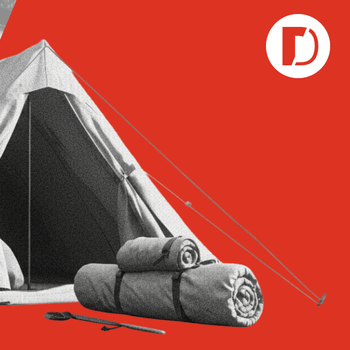The Tradeoffs Between Boosting Conversions and Scaling Your Business
by Trevor Anderson • March 30, 2020
If you had to decide between a higher online conversion rate and scaling your business, which option would you choose? Most business owners I’ve asked this question think about it, then exuberantly reply, “both!”
While that’s a good answer, the fact is that 95% of the time…that’s not how it works.
It would certainly be nice if you could tackle all of your priorities simultaneously, there’s a reason why they’re called priorities. Most of the time, you have to pick and choose which priorities you want to focus on first. You don’t have the time, money or bandwidth to tackle everything at the same time.
Choosing your priorities isn’t the same thing as saying “no” to things that are lower on your priority list, though. You’re just saying, “not yet” because you need to complete your higher priority objectives first. Once you have those done, you can move on down the list until everything is done.
So, getting back to our original question, if you have to decide between a higher conversion rate and scaling your business, which one is a higher priority right now? There are tradeoffs to both, so which should you choose?
To help you answer that question, I want to talk about improving conversion rate, scaling your business, and how you can decide which of these key priorities you should be focusing on first.
Improving Conversions and ROAS
Conversions, conversion rate and return on ad spend (ROAS) are all efficiency metrics. You’re trying to squeeze more juice from the same lemon without diluting the lemonade.
On the surface, it’s easy to look at the current traffic to your website and think, “Wow, if I could just double my conversion rate, think how much I’d grow!” However, while improving your conversion rate can help you grow, remember, it’s an efficiency metric.
Contrary to all of the case studies you’ll read out there, most conversion rate optimization (CRO) does not result in a 100% increase in conversions. Most of the time, a successful test will increase your conversion rate by 5-20%.
That’s great for business and profitability, but it’s not the kind of increase you can use to scale your business.
In addition, conversion rate optimization takes time and work. Not all tests produce positive results—many have neutral or even negative effects on your conversion rate. That’s okay, because that’s how you learn and get to those oh-so-important positive results.
Is CRO Right for You?
Again, conversion rate optimization is an efficiency strategy, not a growth strategy. If you’re not sure whether or not CRO is your top priority, ask yourself, how much are you willing to change to improve your conversion rate?
Are you…
- Willing to change paid ad targeting and incur the cost of learning about a new audience?
- Willing to lower price to entice more users to buy?
- Willing to spend months, quarters, or years systematically pulling levers to resonate with the target audience?
Conversions can always be increased by a lower price, so if you really want to increase conversions, that’s always an option. When faced with the prospect of increasing conversions by decreasing price, though, most business owners suddenly realize that more conversions isn’t their real goal.
Their real goal is to increase revenue.
Likewise, you can increase conversions through CRO efforts and a dedicated testing strategy, but unless you happen to have an expert on staff, that will also incur costs in the shorter term to secure long term gains.
What to Expect When You’re Focused on Scaling Conversions
If you’re focused scaling conversions, improving your conversion rate or increasing ROAS, you can expect slower growth overall. Building efficiency takes time and effort that don’t directly produce much in the way of sales.
However, the growth you do gain from that added efficiency should remain sustainable until the target market is exhausted. If you’re selling consumable goods, that may result in significant added revenue and profit over the course of months and years.
In my experience, scaling conversions makes more sense for larger businesses. When your business is well-established, increases in conversion rates have a bigger, more meaningful impact than it does for a smaller business.
A 5% increase in sales for a business that does $10,000 a month in revenue is an extra $500 a month. For a business that does $1,000,000 in sales a month, though, a 5% increase in sales is an extra $50,000 in revenue.
In addition, well-established businesses often see diminishing returns from their paid advertising. At a certain point, you’re effectively reaching market saturation. Spending more doesn’t produce more results the way it can for a smaller business.
But, if you shift to a conversion-based, on-site improvement strategy, you can squeeze more sales out of your traffic and generate a better ROAS. You might not double your business, but you don’t need to double your business to survive. Instead, you need to increase efficiency, and that’s the sweet spot of conversion rate optimization.
Scaling the Business
If focusing on conversions doesn’t sound right for you, you may be more focused on scaling your business. Here, you’re not focused on efficiency—you’re focused on growth.
If you’re getting 10,000 visits a month to your website and have a conversion rate of 2%, you’re getting 200 conversions a month. If you can double that traffic while maintaining your conversion rate, you’ll be getting 400 conversions a month.
This kind of growth is fun, but it’s also risky and expensive in its own way. When trying to grow your business, you’ve got to pull other levers and incur their costs.
The tradeoff to focusing on growth is that you lose efficiency, so you don’t want to focus on scaling without thinking things through carefully.
Consider the following:
- Are you willing to delve into lower intent audiences (who will have a lower conversion rate) to produce more sales as you exhaust high-intent ones?
- Do you have an organic/direct traffic growth strategy? If not, you’ll be relying on paid traffic, which is more expensive (monetarily and from time management) and less stable as you’re subject to changes in ad platforms
- Do you have the ability to lose more margin to higher CPA costs and still hit the profit goals you need, in addition to generating top-line revenue growth?
When you’re focused on growth, you’re bound to experience growing pains. In the long run, those growing pains will hopefully pay off, but in the short-run, you’ll probably have to sacrifice a lot of efficiencies to scale.
For example, the easiest way to drive traffic is with paid advertising. Paid advertising, however, is a lot more expensive than many other advertising channels. It can help you scale fast, but unless you have enough profit margin (or sales from other sources) to handle those increased costs, you may not make much money while you’re growing.
What to Expect When You’re Focused on Scaling
If you’re focused on scaling, you can expect big increases in traffic. After all, you’re paying for traffic, so if you’re not getting a lot more traffic to your site, you’re doing something wrong.
That increase in traffic may not come with a corresponding increase in conversions, though. You’ll be testing out new audiences, and not all of them will convert well.
As a result, expect to see big swings in conversions and traffic as you work to nail down your targeting. Focusing on growth is a high-risk, high reward activity. Things will probably be pretty volatile for a while as you dive into additional audiences.
In my experience, scaling with paid ads or other “fast-growth” channels makes sense for smaller businesses with exponential growth goals, or those looking to learn fast, fail fast and get to profitability faster.
Unfortunately, those results come at a price—you’re buying your way to fast results, after all.
But, if you do it right, focusing on growth can help your business get to a more stable position where you are less dependent on paid strategies. From there, you can shift to a conversion-based, on-site improvement strategy that generates a better ROAS.
Making Tradeoffs
Both increasing conversions and scaling the business have opportunities and drawbacks, and each path should be taken only after the business has set its goals and expectations.
If you are a gambling man/woman and ‘growth hacking” is your method of business, scaling the business might be a better first step for you. Crank up those ad budgets, buy media wherever you can, and go wild!
But if slow and steady profitability is your course of action, or if you’re looking for replicable learnings cross-channel, increasing ROAS, documenting learnings, and testing your website along the way might be a smarter avenue.
By the way, if you’d like some help with either conversion rate optimization or scaling your business, let us know here or in the comments. We’d love to help your business achieve its goals.
What are your top business priorities? How do you decide between efficiency and scaling? Have any additional insights into these two strategies? Leave your thoughts in the comments below.





